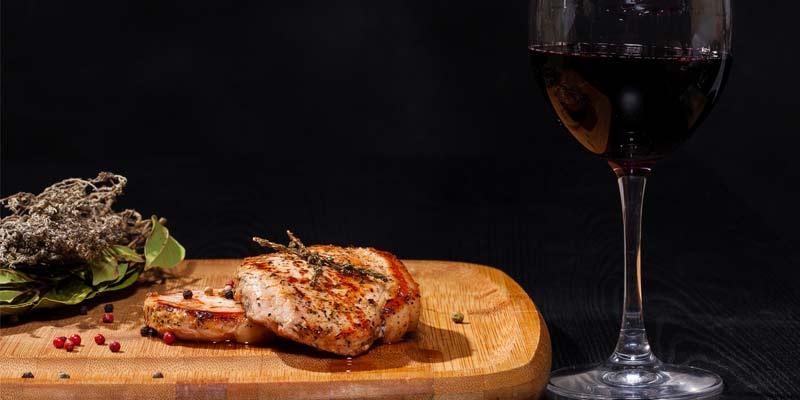Picture this: Your food arrives and it looks quite different from what you thought you ordered. Plus, you really wanted macaroni and cheese instead of asparagus, but you weren’t sure if that was an option. Also, you’re seated by the noisy kitchen, which you hate.
When is it okay to speak up in restaurants to ensure the dining experience is what you want – and what you’re paying for?
We’re taking a look at how to navigate these tricky scenarios when it comes to sending your food back, making substitutions with the menu, and sitting where you want to sit.

Sending Food Back
Acceptable reasons to send food back:
- If your steak is not cooked to what you ordered.
- If your food is undercooked or burned (and isn’t supposed to be raw or charred).
- If you are allergic to an item, asked for the dish without it, and it’s there anyway.
- If there is a weird foreign object in your dish.
- If it is a completely different dish from what you ordered.
In short, you really should only send food back if there was a mistake on the restaurant’s part – if it was your mistake you might have to accept your meal as is.
For instance, if you order a steak well-done and it arrives at your table bloody, it would be appropriate to send the dish back. If, however, you order a steak well-done and when it comes you realize that you meant medium-well, that’s on you.
A great way to avoid mistakes happening in the first place is to read the menu carefully and ask questions. If you’re on a special diet or have allergies this is especially important – speak up if you see an unfamiliar ingredient or if you’re confused by the descriptions on the menu.
When a restaurant does make a legitimate mistake, however, it’s kind to voice what went wrong and give them a chance to correct it. Acting like everything was fantastic and then slamming the establishment on Yelp when you get home would not be the best way to handle a bad experience.
It may sound obvious, but kindness can go a long way. You can say something like, “I know this isn’t your fault but my spinach salad has strawberries in it when I ordered it without. I wouldn’t normally send food back but I’m highly allergic.”
If you do opt to send food back because of an error on your end, you especially will need to be apologetic and courteous. “I’m so sorry, I forgot to mention I’m allergic to strawberries. This is completely my fault but I’m afraid I won’t be able to eat this salad.”
Which brings us to – when is it okay to omit food items or make substitutions?
Making Substitutions
Some restaurants balk at the thought of making substitutions with the dishes on the menu, and for good reasons. Here’s why you may want to hesitate before asking to swap out a side for a different one:
- The item being subbed in costs more than the original
- The change must be noted and tracked in an already busy kitchen
- You might disrupt the flavor balance
The last point is important because sometimes a substitution completely changes the entire palate of the dish. With the meal not tasting the way it was originally intended to, the chef could worry that you might be dissatisfied and unfairly blame the restaurant in a review.
However, omitting an item from a dish – especially for allergy reasons – should not be a big deal. If you don’t want bacon in your pasta carbonara it’s not that much of a hassle for the chef to leave it out.
If, though, you request a merlot sauce over your filet mignon instead of Bearnaise sauce, that’s almost certainly going to annoy the chef.
Sitting Where You Want
It should probably go without saying that you shouldn’t just seat yourself in a restaurant that does not specify a “seat yourself” policy. But what about asking the hostess to sit you somewhere other than where she does?
Although you may see a virtually empty restaurant in front of you, the hostess undoubtedly has a system in place – that’s her job, she’s not just there as a formality.
If you see an empty table you want, it’s possible there is no server in that section. Or, the designated server is taking care of a large party and is now going to be overwhelmed – which means you might end up waiting longer for your food.
By insisting on your preferred table, you may disrupt the rotation of servers, resulting in unevenly distributed earnings for the night. One server may be overloaded with tables while another doesn’t have enough.
If you are going to request a special table, the key is to be polite about it, be prepared to wait longer until that table is available to you, and speak up before you’re actually seated.
By following simple restaurant etiquette you can ensure a pleasant dining experience for you and your companions. Only send food back if it’s absolutely necessary, don’t ask for a major modification to a dish, and if it all possible, simply sit where the hostess seats you.
Try out your new dining etiquette expertise with a coupon for one of these favorite Saratoga Restaurants. Get your coupon >>
Sources:
- The Guardian: Modern manners: ordering off-menu
- Lifehacker: How to Send Back Food at a Restaurant Without Pissing Off Your Waiter
- The Primalist: There’s Nothing Polite About Declining Modifications and Substitutions
- Serious Eats: Secrets from the Host Stand: 10 Things a Restaurant Host Wishes They Could Tell You
- Thrillist: 9 Actually Legit Reasons for Sending Food Back at a Restaurant



I know someone who is allergic to garlic. He found that calling the restaurant prior to going there makes things go smoothly when dining. With most menus on line, it is easy to call and ask if your menu selection has garlic in it. Bon appetit.
If you order a steak well-done and you get a dry, tasteless piece of shoe leather, then that’s your mistake because that’s what you requested!
I would offer just one correction. Instead of “If you don’t want bacon in your pasta carbonara it’s not that much of a hassle for the chef to leave it out” it should read ” If you don’t want bacon in your pasta carbonara it’s not that much of a hassle for the chef add it to my carbonara.”